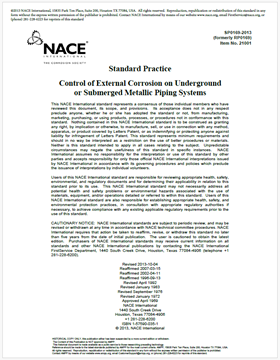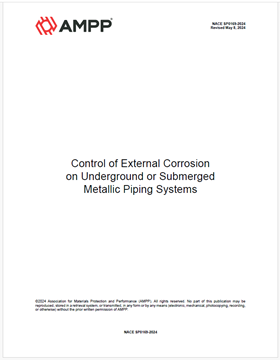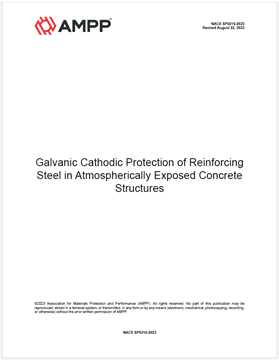Search
Products tagged with 'cathodic protection'
View as
Sort by
Display
per page
NACE Publication 01116-SG, “State-of-the-Art Report on Evaluating Cathodic Protection Systems on Existing Reinforced Concrete Structures”
Product Number:
21411-SG
ISBN:
1-57590-248-2
Publication Date:
2016
$109.00
NACE Publication 01210-2010-SG, Cathodic Protection for Masonry Buildings Incorporating Structural Steel Frames
Product Number:
24244-SG
Publication Date:
2010
$109.00
NACE Publication 10A392-2006 "Effectiveness of Cathodic Protection on Thermally Insulated Underground Metallic Structures
Product Number:
24156-SG
Publication Date:
2006
$179.00
NACE Publication 10A392-2018 "Effectiveness of Cathodic Protection on Thermally Insulated Underground Metallic Structures"
Product Number:
24156-2018
$109.00
NACE Publication 35110-2010-SG, AC Corrosion State-of-the-Art: Corrosion Rate, Mechanism, and Mitigation Requirements
Product Number:
24242-SG
$109.00
NACE Publication 35201-2001-SG, Technical Report on the Application and Interpretation of Data from External Coupons Used in the Evaluation of Cathodically Protected Metallic Structures
Product Number:
24213-SG
Publication Date:
2001
$109.00
NACE Publication 7L198-2009-SG, Design of Galvanic Anode Cathodic Protection Systems for Offshore Structures
Product Number:
24196-SG
Publication Date:
2009
$109.00
NACE SP0107-2017, “Electrochemical Realkalization and Chloride Extraction for Reinforced Concrete”
Product Number:
21113-SG
ISBN:
1-57590-210-9
Publication Date:
2017
$179.00
NACE SP0169-2013 (formerly RP0169), "Control of External Corrosion on Underground or Submerged Metallic Piping Systems"
Product Number:
21001-SG
Publication Date:
2013
$179.00
NACE SP0169-2024, Control of External Corrosion on Underground or Submerged Metallic Piping Systems
Product Number:
NACE SP0169-2024
Publication Date:
2024
$109.00
NACE SP0216-2016, “Sacrificial Cathodic Protection of Reinforcing Steel in Atmospherically Exposed Concrete Structures.”
Product Number:
21403-SG
Publication Date:
2016
$179.00
NACE SP0216-2023, Galvanic Cathodic Protection of Reinforcing Steel in Atmospherically Exposed Concrete Structures
Product Number:
NACE SP0216-2023
Publication Date:
2023
$109.00












